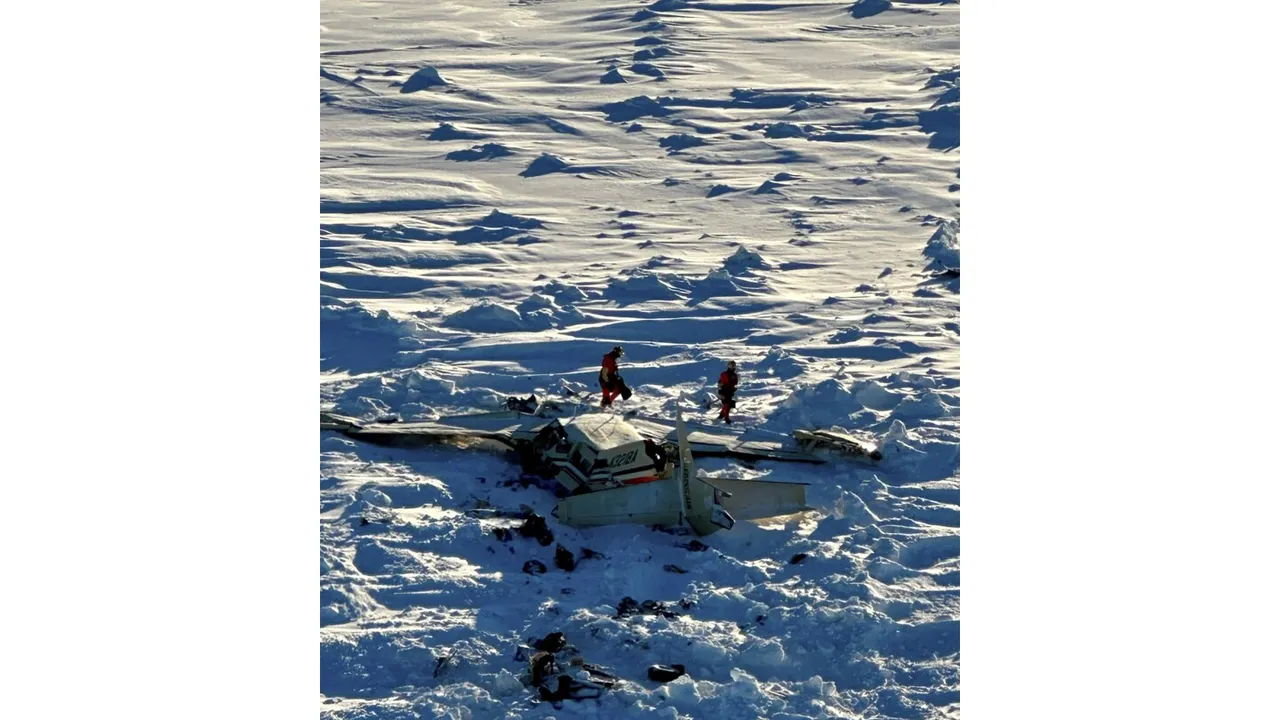
JUNEAU, Alaska (AP) — In a heartbreaking incident, a small commuter plane heading to Nome, a central hub in western Alaska, crashed on Friday. The tragedy claimed the lives of all 10 individuals onboard. The wreckage was discovered on sea ice, according to authorities.
Mike Salerno, a spokesperson for the U.S. Coast Guard, reported that rescuers identified the crash site during a helicopter search of the aircraft's last known location. They dispatched two rescue swimmers to further inspect the downed plane.
The aircraft, a Bering Air single-engine turboprop, departed from Unalakleet on Thursday afternoon. It was carrying nine passengers and a pilot, as confirmed by Alaska’s Department of Public Safety. The Cessna Caravan left Unalakleet at 2:37 p.m., losing contact with officials less than an hour later, noted David Olson, Bering Air's director of operations. Weather conditions included light snow and fog, with temperatures hovering at 17 degrees Fahrenheit (minus 8.3 Celsius).
The Coast Guard stated that the plane went missing approximately 30 miles (48 kilometers) southeast of Nome, with the wreckage located 12 miles (19 kilometers) offshore.
Radar forensic data from the U.S. Civil Air Patrol indicated an unexpected event around 3:18 p.m., leading to a rapid loss in elevation and speed. Coast Guard Lt. Cmdr. Benjamin McIntyre-Coble remarked on the absence of distress signals from the aircraft. Normally, planes are equipped with an emergency locator transmitter, which could send distress signals via satellite if triggered by seawater exposure. However, no such signals were received by the Coast Guard.
All individuals on board were adults, aboard a regularly scheduled commuter flight, according to Lt. Ben Endres from the Alaska State Troopers. A collaboration of local, state, and federal agencies spearheaded the search efforts, navigating stretches of ice-covered waters and expansive frozen tundra.
This incident marks the third major aviation mishap in the U.S. within eight days. Other tragedies include a commercial jetliner and Army helicopter collision near Washington, D.C., resulting in 67 deaths on January 29, and a medical transportation plane crash in Philadelphia on January 31, which claimed seven lives.
Alaska's geographical layout, lacking connections to the state’s primary road network, significantly relies on air travel, especially in rural areas during winter. The region frequently experiences sudden snowstorms and high winds.
Bering Air serves 32 villages across western Alaska, operating from hubs in Nome, Kotzebue, and Unalakleet. The airline typically provides twice-daily scheduled flights from Monday to Saturday. Following the crash, two Bering Air planes were observed conducting a grid search off the coastline, as tracked by flight monitoring service Flightradar24.
Unalakleet, a village on the iconic Iditarod Trail with around 690 residents, sits 150 miles (about 240 kilometers) southeast of Nome. Nome itself, renowned as the ending point of the 1,000-mile (1,610-kilometer) Iditarod, expressed plans to hold prayer vigils for the victims, their families, and search crews.
U.S. Senators Lisa Murkowski and Dan Sullivan extended their condolences to the victims’ families and the Nome community. U.S. Rep. Nick Begich also expressed his support to aid Nome and Alaska Governor Mike Dunleavy.
(Reported by Seattle's Golden, with contributions from Martha Bellisle in Seattle.)